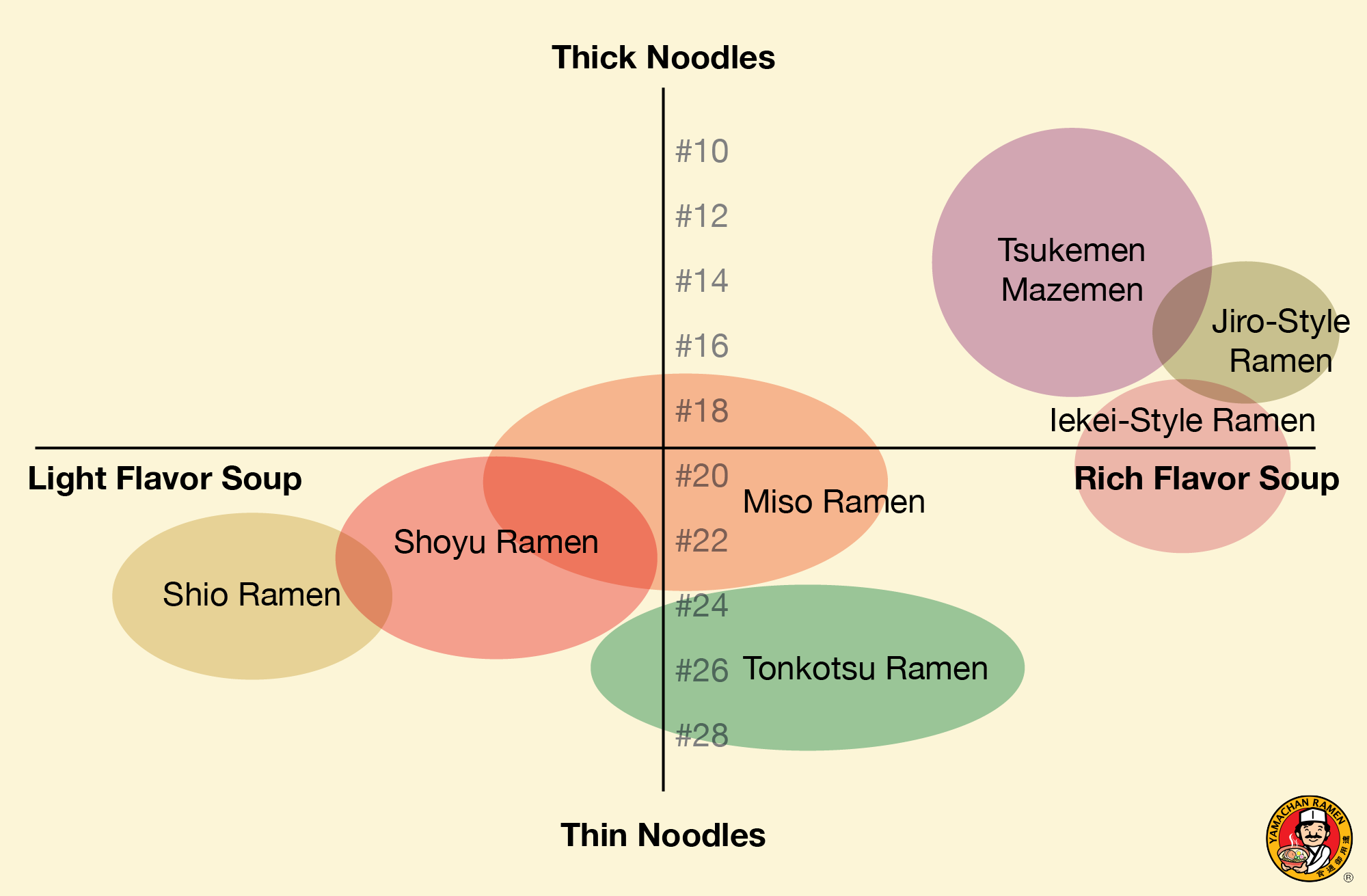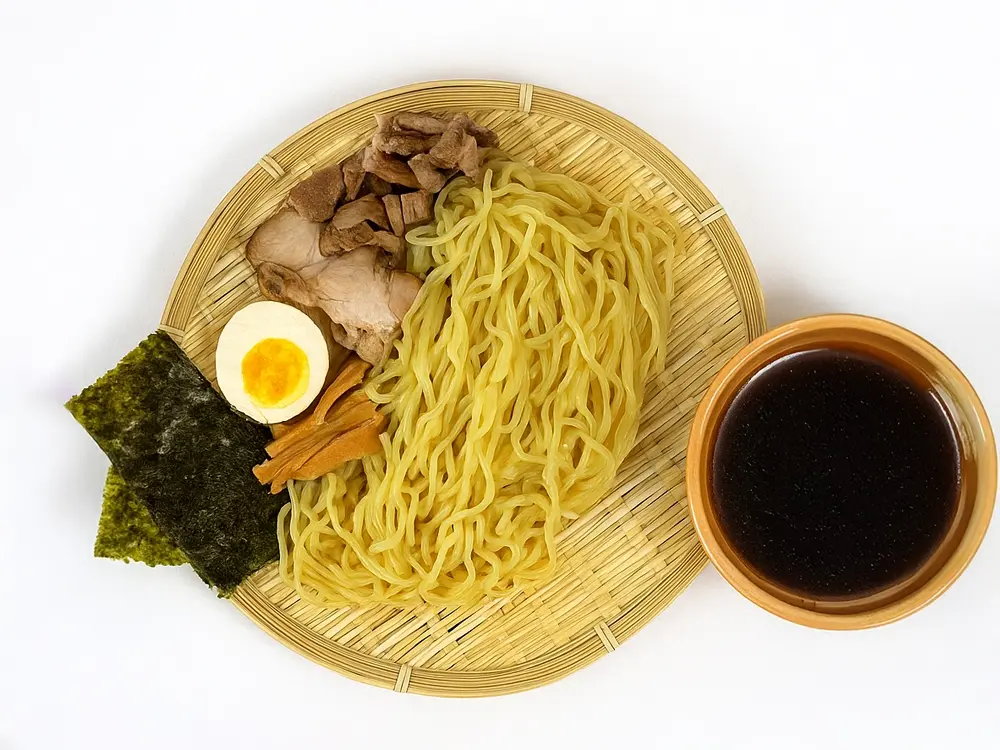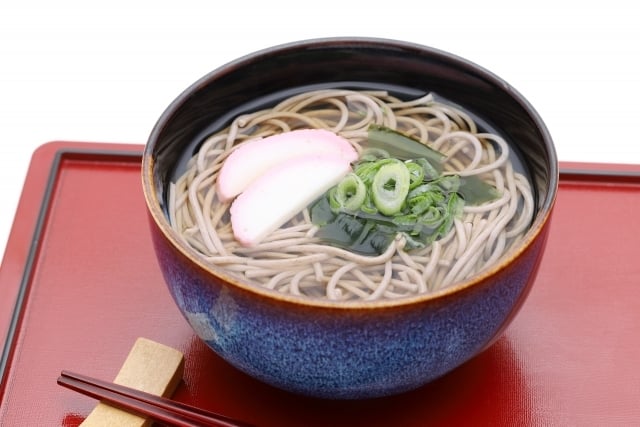Shoyu Ramen
Ramen Style
Shoyu ramen is one of Japan’s most historic and widely loved ramen styles, known for its clear, soy-sauce–based broth and balanced, savory flavor. Made by combining chicken, pork, seafood, or vegetable stocks with aromatic seasonings, this style captures the classic foundation of Japanese ramen culture.
Shoyu ramen is also recognized as one of Japan’s “Four Major Ramen Styles.”
For a deeper look at how it compares to the other major types, explore our Four Pillars of Ramen guide.
Characteristics
Originating in Tokyo, shoyu ramen is designed to feel light on the palate while still delivering plenty of umami.
Rather than being thick or creamy, the broth is clean and aromatic, allowing the fragrance of soy sauce and chicken or seafood stock to stand out.
Depending on the shop, the tare (seasoning base) can taste brighter and sharper or deeper and more roasted, but the goal is always the same: a well-balanced bowl you can comfortably enjoy to the very last sip.
If you’d like to explore how shoyu compares with the other major ramen styles,
you can also learn about miso ramen, shio ramen, and tonkotsu ramen.
Noodle Type
The noodles used in shoyu ramen are usually medium-thin and curly, which allows them to hold the broth well, creating a harmonious eating experience.
Toppings
The toppings for shoyu ramen often include slices of chashu (braised pork), menma (fermented bamboo shoots), nori (seaweed), ramen eggs, and green onions.
History
Shoyu ramen has a rich history that dates back to the early 20th century in Tokyo, where it is believed to have originated. It was one of the first ramen styles to gain widespread popularity in Japan, thanks to its simple yet deeply satisfying flavor. The creation of shoyu ramen is often credited to Chinese immigrants who brought their noodle-making techniques to Japan. Over time, these noodles were adapted to suit Japanese tastes, with soy sauce being added to the broth to create the distinctive shoyu flavor.
During the post-World War II era, shoyu ramen became even more popular as it was easy to make and affordable, fitting perfectly into Japan's rapidly changing food culture. Today, it remains a favorite among both Japanese locals and international visitors, offering a taste of Japan’s culinary tradition in every bowl.
Popular Shoyu Ramen Styles in Japan
Shoyu ramen has many regional variations across Japan, each with its unique taste and twist on the classic soy sauce-based broth. Here are some of the most well-known styles:
- Tokyo Shoyu Ramen
A light, clear soy sauce broth made from chicken, vegetables, and sometimes seafood. Served with straight medium noodles, chashu pork, bamboo shoots, green onions, and nori. The classic style you’ll find in many old Tokyo ramen shops. - Kitakata Shoyu Ramen (Fukushima)
A mild, slightly sweet soy sauce broth made from pork and niboshi (dried fish). Features thick, flat, chewy noodles topped with chashu, green onions, naruto (fish cake), and bamboo shoots. Kitakata city is famous as one of Japan’s three great ramen towns. - Asahikawa Shoyu Ramen (Hokkaido)
A rich blend of soy sauce, chicken or pork broth, and seafood broth topped with a layer of pork fat to keep the soup hot in Hokkaido winters. Medium curly noodles, chashu, bamboo shoots, green onions, and sometimes butter make this bowl hearty and satisfying. - Yokohama Tonkotsu Shoyu Ramen (Iekei)
A robust mix of pork bone broth and soy sauce, creating a creamy, savory soup. Served with thick straight noodles and toppings like spinach, nori, chashu pork, green onion, and ramen egg. Popularized by Iekei-style ramen shops originating in Yokohama. - Onomichi Shoyu Ramen (Hiroshima)
A clear soy sauce broth enhanced with pork back fat for extra richness. Flat or thin noodles are topped with chashu, bamboo shoots, green onions, and pieces of back fat. Known for its combination of seafood flavor and pork depth. - Hiroshima Tsukemen (Hiroshima)
A spicy, chilled soy sauce dipping broth paired with firm medium noodles. Toppings include cabbage, cucumber, boiled egg, green onions, sesame seeds, and sometimes chashu. Refreshing and popular especially in summer. - Takayama Shoyu Ramen (Gifu)
A light yet flavorful broth where the soy sauce tare is simmered together with the stock, creating a unified taste. Served with thin straight noodles, chashu, bamboo shoots, green onions, and sometimes mushrooms. A specialty from the Hida-Takayama area. - Wakayama Shoyu Ramen (Wakayama)
A deep, hearty soy sauce broth blended with rich pork bone stock. Served with thin straight noodles, chashu, bamboo shoots, green onions, and kamaboko (fish cake). This ramen is beloved in the Kansai region for its creamy and savory taste.
Explore these diverse styles to taste Japan’s rich soy sauce ramen culture!
Yamachan Retail Products:





